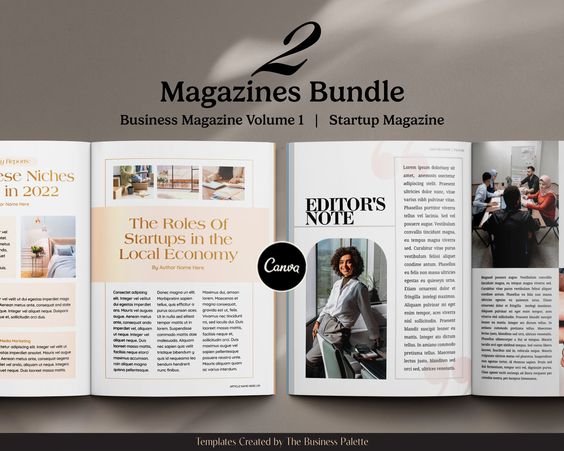Introduction to Fast Company
Fast Company magazine has carved out a unique niche in the crowded landscape of business publications. Known for its cutting-edge insights and innovative storytelling, it’s more than just another source of news—it’s a beacon for entrepreneurs, managers, and creatives alike. Whether you’re looking to spark your next big idea or stay ahead of industry trends, Fast Company provides the inspiration you need.
With an unwavering commitment to highlighting groundbreaking ideas and forward-thinking leaders, Fast Company continues to shape conversations around business strategy and culture. But what truly sets this magazine apart? Let’s dive deeper into its history, distinctive features, and the immense impact it has made on both individuals and industries worldwide.
The History and Evolution of Fast Company
Fast Company magazine was launched in 1995, during a time when business journalism faced significant shifts. Founded by Bill Taylor and Alan Webber, it aimed to redefine how we think about work and culture in the corporate world.
Early on, Fast Company distinguished itself with its focus on innovation and creativity. It celebrated not just successful companies but also the people behind them—visionaries reshaping industries.
Throughout the years, Fast Company has adapted to changing media landscapes. The rise of digital platforms led it to embrace new formats while maintaining its commitment to insightful storytelling.
With an ever-evolving editorial direction, the magazine remains relevant by covering emerging trends like sustainability and technology’s impact on society. This evolution reflects a broader shift in business thinking that prioritizes purpose alongside profit.
Unique Features and Editorial Approach
Fast Company magazine stands out due to its innovative editorial approach. It blends engaging storytelling with insightful analysis, capturing the essence of modern business culture.
The magazine often emphasizes creativity and design thinking. This focus attracts a diverse readership eager for fresh ideas and inspiration. Articles are crafted not just to inform but also to spark conversations.
Another unique feature is Fast Company’s commitment to social impact. The publication doesn’t shy away from discussing how businesses can drive positive change in society.
Moreover, the visual presentation is striking. Eye-catching graphics complement compelling narratives, making each issue a feast for the eyes as well as the mind.
Fast Company encourages reader interaction through various platforms. This engagement fosters a community where ideas flourish beyond the pages of the magazine itself.
Success Stories and Impact on the Business World
Fast Company magazine has a knack for spotlighting innovative businesses that redefine industries. Through compelling narratives, it showcases success stories from startups to established giants.
These articles often reveal the strategies behind breakthrough ideas. Readers gain insights into what drives these companies forward. It’s not just about profits; it’s about purpose and making a difference.
The impact of Fast Company extends beyond its pages. Entrepreneurs draw inspiration from real-world examples of resilience and creativity. Many attribute their own successes to lessons learned within its features.
By highlighting diverse voices in business, it fosters an inclusive dialogue around entrepreneurship. This approach encourages readers to think differently and embrace change as a constant companion on the road to success.
Digital Presence and Influence
Fast Company magazine has successfully adapted to the digital age. Its online platform extends far beyond traditional print media, creating a dynamic space for readers.
The website features engaging articles, interactive content, and multimedia elements that enhance user experience. This approach not only attracts a diverse audience but also fosters community engagement through comments and social sharing.
Social media plays a pivotal role in Fast Company’s influence. The magazine actively engages followers on platforms like Twitter, Instagram, and LinkedIn. These channels serve as vital touchpoints for real-time discussions around innovation and entrepreneurship.
Additionally, Fast Company leverages email newsletters to curate top stories directly into inboxes. Subscribers receive insights tailored to their interests, making it easier to stay informed about trends shaping the business landscape.
This blend of quality content with robust digital strategy amplifies its reach and solidifies Fast Company’s position as an authority in the business world.
Notable Interviews and Profiles in Fast Company
Fast Company magazine is renowned for its in-depth interviews and profiles that spotlight influential figures in the business landscape. These conversations often delve into unconventional approaches, blending creativity with leadership.
One standout feature is how Fast Company captures personal anecdotes from industry giants. Readers gain insight into their journeys—from initial struggles to eventual triumphs. This humanizes the corporate world and inspires future leaders.
Profiles of innovators like Tim Cook or Sara Blakely reveal not just professional achievements but also core values and personal philosophies. They emphasize resilience, adaptability, and vision.
The magazine’s focus on diverse voices strengthens its narrative further. Entrepreneurs from various backgrounds share unique perspectives that challenge traditional norms.
These compelling stories engage readers, encouraging them to think differently about their own careers while making Fast Company a vital source of inspiration within the business community.
Impact on Business World
Fast Company magazine has significantly influenced the business world, shaping how entrepreneurs and leaders approach innovation. Its focus on creativity and sustainability encourages companies to think outside traditional frameworks.
By highlighting trailblazers and disruptive startups, Fast Company inspires established businesses to adapt or face obsolescence. The insights offered help organizations embrace change rather than resist it.
Moreover, its emphasis on social responsibility has prompted many firms to reevaluate their missions. This shift toward conscious capitalism is reshaping corporate strategies across industries.
Readers often find actionable advice within its pages. Whether through case studies or expert opinions, the publication equips decision-makers with tools for growth in an ever-evolving marketplace.
Fast Company serves as a catalyst for new ideas and practices that resonate far beyond its readership, making waves throughout the entire business landscape.
Notable Contributors and Interviews
Fast Company magazine features a diverse array of contributors who bring unique perspectives to the table. From industry leaders to innovative thinkers, their insights shape discussions around creativity and business.
Among notable contributors is Tim Ferriss, whose provocative ideas challenge traditional norms. His interviews often provide readers with actionable strategies for success.
Another standout is Sheryl Sandberg, whose views on leadership resonate deeply within the entrepreneurial community. Her candid reflections spark vital conversations about workplace culture and empowerment.
The magazine also highlights emerging voices in technology and sustainability. These fresh perspectives keep Fast Company at the forefront of modern business discourse.
Additionally, exclusive interviews with CEOs from trailblazing companies offer readers an inside look at decision-making processes that drive innovation.
These contributions not only enrich the content but also establish Fast Company as a platform for thought-provoking dialogue in today’s rapidly changing landscape.
How to Subscribe and Stay Updated with Fast Company
Subscribing to Fast Company magazine is simple and straightforward. Visit their official website, where you can choose from various subscription options tailored to your preferences. Whether you’re interested in digital access or a print edition, there’s something for everyone.
Once subscribed, stay updated through regular newsletters that deliver the latest articles straight to your inbox. This feature ensures you never miss important insights into innovation and leadership.
You can also follow Fast Company on social media platforms like Twitter, Instagram, and LinkedIn. Engaging with their posts keeps you informed about trending topics and upcoming events in the business world.
Consider downloading the Fast Company app for an enhanced reading experience on-the-go. The app provides easy access to all published content while allowing personalization based on your interests.
Conclusion: The Future of Fast Company in the Business Industry
Fast Company magazine has carved a niche for itself in the crowded world of business publications. As it continues to innovate and adapt, its commitment to insightful journalism remains unwavering. The blend of technology, creativity, and design makes it relevant today and sets the stage for future growth.
The rise of digital media is an opportunity rather than a challenge. Fast Company’s strong online presence ensures that they remain at the forefront of conversations about modern business practices. They are not just reporting on trends; they’re shaping them.
Emerging voices and thought leaders featured within its pages inspire readers worldwide. Their focus on diversity in topics—from sustainability to leadership—ensures that every reader finds something compelling.
As businesses evolve with rapid advancements in technology, Fast Company will likely continue providing valuable insights into these changes. Its ability to engage audiences through various platforms reinforces its status as a vital resource for entrepreneurs and industry leaders alike.
Looking ahead, Fast Company is poised to expand its impact even further by embracing new formats and technologies while staying true to its core mission: exploring what drives innovation and success in today’s complex landscape.


